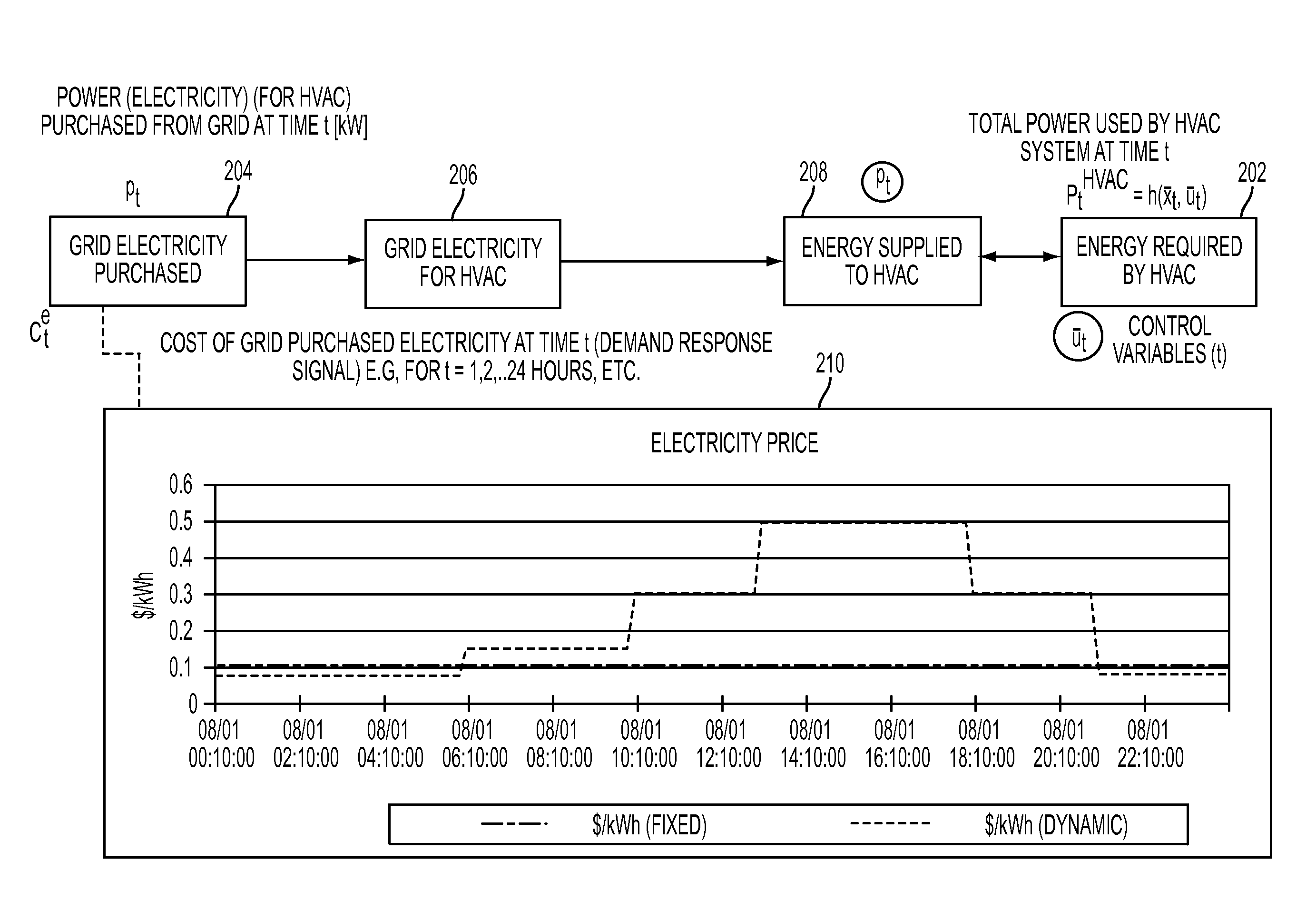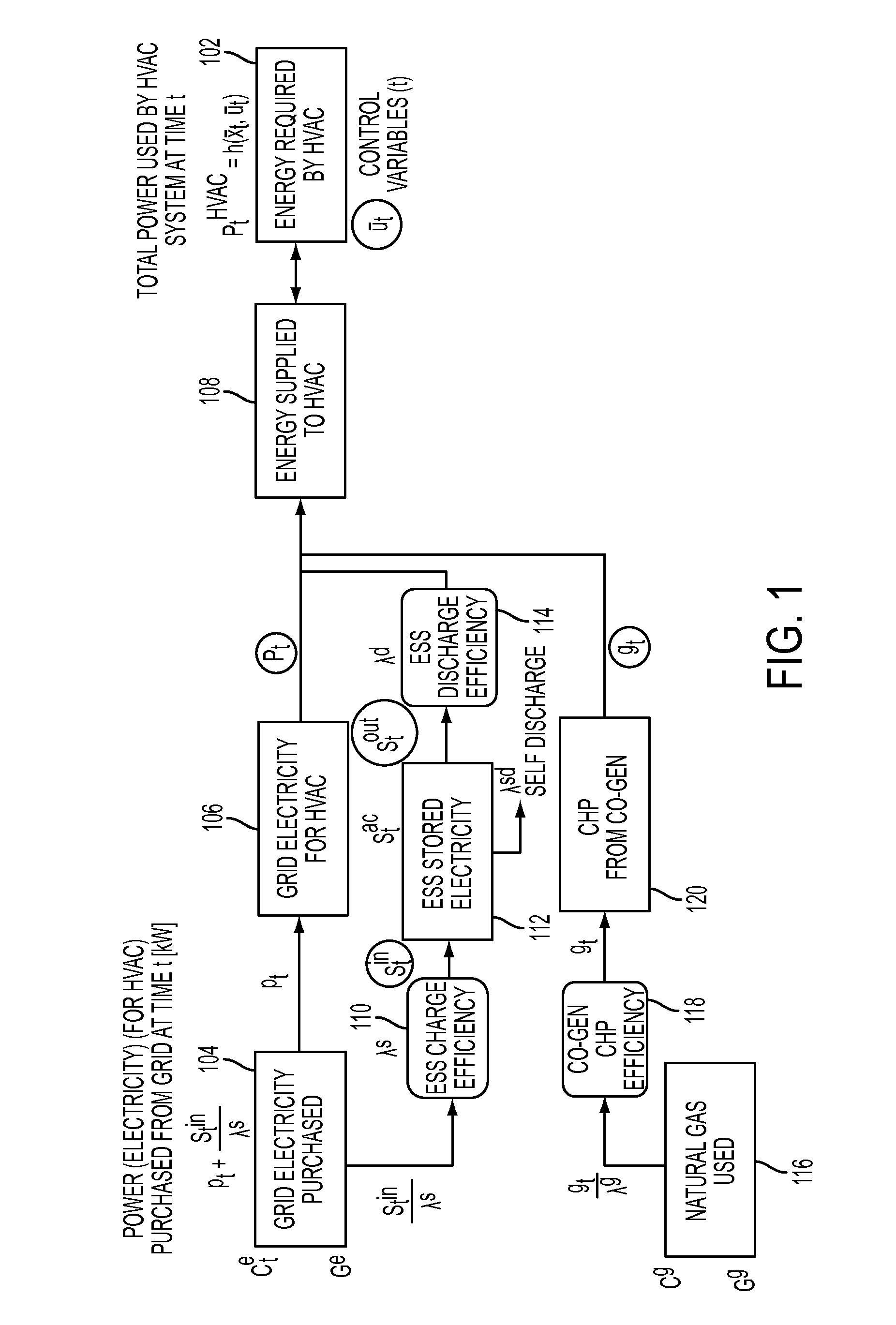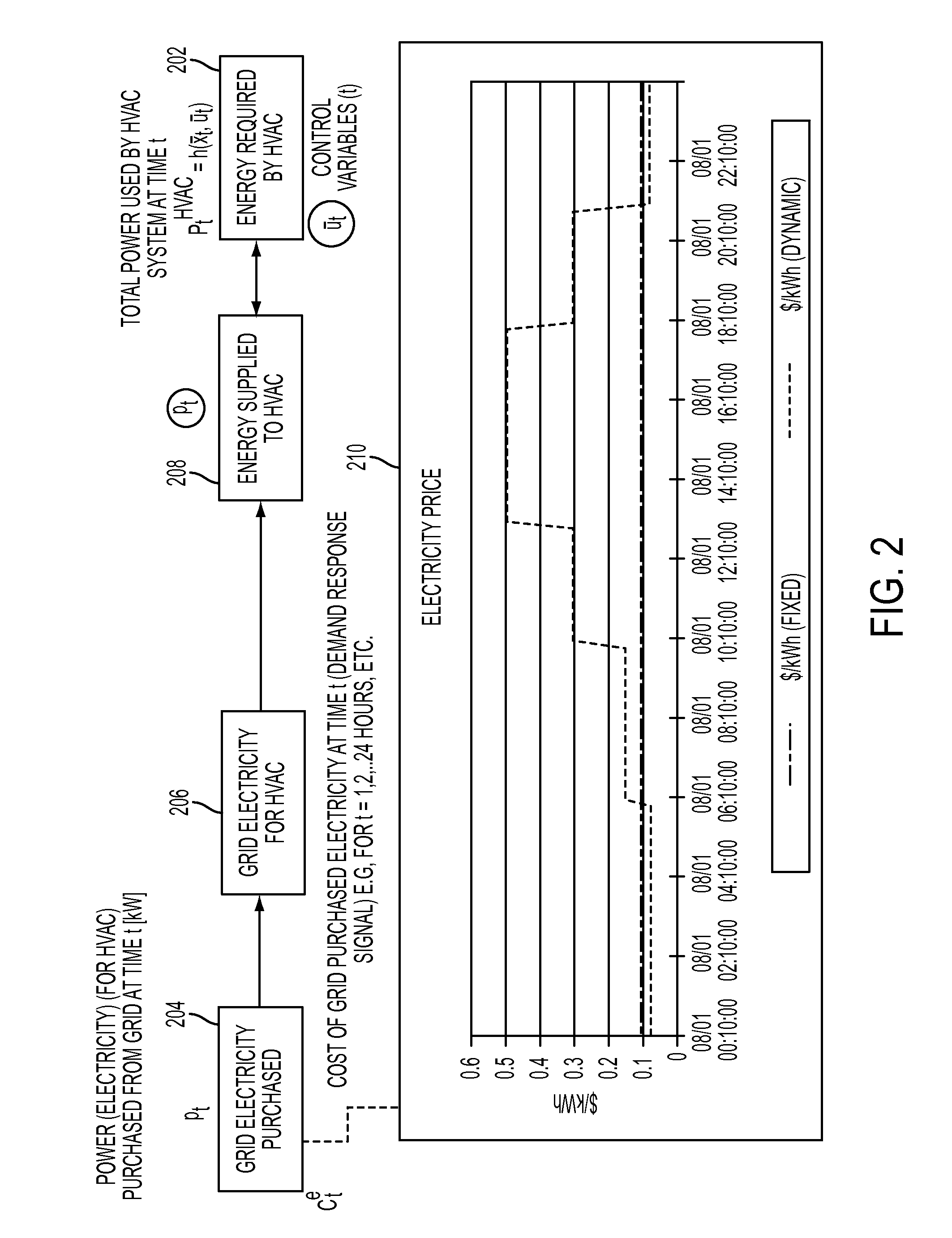HVAC system control integrated with demand response, on-site energy storage system and on-site energy generation system
a technology of demand response and hvac system, applied in the direction of instruments, heating types, static/dynamic balance measurement, etc., can solve the problems of not deciding how the load of hvac system resulting from the optimized control is optimal, and commercial and residential buildings consume a large amount of energy
- Summary
- Abstract
- Description
- Claims
- Application Information
AI Technical Summary
Benefits of technology
Problems solved by technology
Method used
Image
Examples
Embodiment Construction
[0017]A method and computer system may be presented that in one embodiment compute control profiles of an HVAC system as well as how the power (load) needed by the HVAC system is optimally sourced through optimized combination of grid purchased energy with demand response, on-site stored energy and on-site generated energy. In one aspect, the control profiles are optimal. The control profile is then communicated to the controller (e.g., a Building Automation System) to control the HVAC system. In one embodiment, the method includes a Model Predictive Control (MPC) framework for a building HVAC control that reduces energy costs of HVAC operations proactively using an optimal control method and considering the dynamic price of grid purchased electricity, on-site stored electricity, and / or on-site generated electricity. The method and / or computer system can serve as an energy reduction and demand response tool that not only optimize the energy costs in buildings but also reduce energy ...
PUM
 Login to View More
Login to View More Abstract
Description
Claims
Application Information
 Login to View More
Login to View More - R&D
- Intellectual Property
- Life Sciences
- Materials
- Tech Scout
- Unparalleled Data Quality
- Higher Quality Content
- 60% Fewer Hallucinations
Browse by: Latest US Patents, China's latest patents, Technical Efficacy Thesaurus, Application Domain, Technology Topic, Popular Technical Reports.
© 2025 PatSnap. All rights reserved.Legal|Privacy policy|Modern Slavery Act Transparency Statement|Sitemap|About US| Contact US: help@patsnap.com



